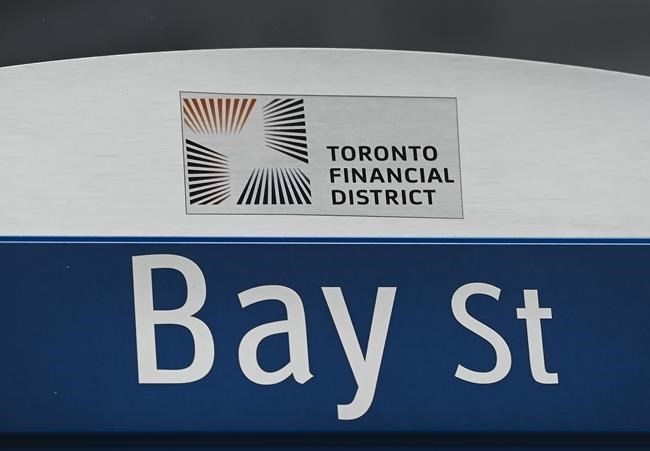TORONTO — North American stock markets rebounded from Thursday's steep losses to end the week slightly positive while the loonie got a lift from a strong jobs report.
The S&P/TSX composite index closed up 196.74 points at 20,257.95 to partially recover from the previous day's move downward, which was the most severe since February.
Overall, the Toronto market was up about 32 points on the week.
In New York, the Dow Jones industrial average was up 448.23 points at 34,870.16. The S&P 500 index was up 48.73 points at 4,369.55, while the Nasdaq composite was up 142.13 points at 14,701.92.
All three markets closed at record highs while the S&P 500 set an all-time record.
"That came as a surprise and shows that there's so much cash in the system that's looking for a home," said Greg Taylor, chief investment officer of Purpose Investments.
"There's still a buy-the-dip mentality out there and this is something that you don't want to fight too hard from selling the market too early because with this much cash in the system and the economy is reopening at least in North America that this can drive the market higher into the year end."
Taylor said some of recent volatility is due to the confusion in the markets as the U.S. and Canada Day holidays resulted in thinner volumes while everyone's waiting for earnings season to start next week.
Amid the slow summer period were heightened concerns about the potential for a fourth wave of COVID-19 to hit that would slow the economic reopening.
That sentiment was felt in the bond market, with bond yields falling as the U.S. 10-year slipped to 1.25 per cent.
"That shocked some people and I think that caused some profit-taking in some of the cyclical trades," he said in an interview.
Friday's reversal reflected a "sober second thought" as people were saying things aren't actually that bad and was typical action of a market in a low-volume summer, Taylor added.
Bank of Montreal chief economist Douglas Porter said there was "a flicker of concern" among investors to start the second quarter on upticks in new virus cases and the Delta variant in several countries.
But he said some order was restored on Friday with China cutting its reserve requirements for banks, oil prices firming again and yields bouncing off the lows.
"And while equities were staggered for all of one day, the bigger picture is that the S&P 500 was again testing record highs by Friday."
The TSX had its strongest day since June 1 to end the week with a broad-based rally involving all sectors with the exception of utilities.
Materials led, gaining 1.6 per cent on the back of higher metals prices that lifted shares of Teck Resources Inc. and Hudbay Minerals Ltd. by 4.8 and 4.7 per cent, respectively.
The August gold contract was up US$10.40 at US$1,810.60 an ounce and the September copper contract was up 8.1 cents at nearly US$4.35 a pound.
The heavyweight financials sector climbed by one percentage point as higher bond yields pushed up Canadian banks, including National Bank, which rose 1.7 per cent a day after falling.
Energy also moved higher on a rise in crude oil prices as Imperial Oil increased 2.4 per cent.
The August crude oil contract was up US$1.62 at US$74.56 per barrel and the August natural gas contract was up two cents at US$3.71 per mmBTU.
Rising crude prices helped lift the Canadian dollar, which traded for 80.15 cents US compared with 79.74 cents US on Thursday.
Also supporting the loonie was a jobs report for June that beat expectations as the Canadian economy nearly recovered the jobs lost during third-wave lockdowns as restrictions rolled back and businesses expanded their payrolls.
Statistics Canada said Friday the economy added 230,700 jobs last month after posting losses in April and May, while the unemployment rate fell to 7.8 per cent for June compared with 8.2 per cent in May, which the agency said was the lowest of the pandemic since the 7.5 per cent recorded in March.
Despite the positive jobs report, the Canadian dollar barely hung on to the 80-cent level as it was flat on the week.
This report by The Canadian Press was first published July 9, 2021.
Companies in this story: (TSX:IMO, TSX:HBM, TSX:TECK.B, TSX:NA, TSX:GSPTSE, TSX:CADUSD=X)
Ross Marowits, The Canadian Press



